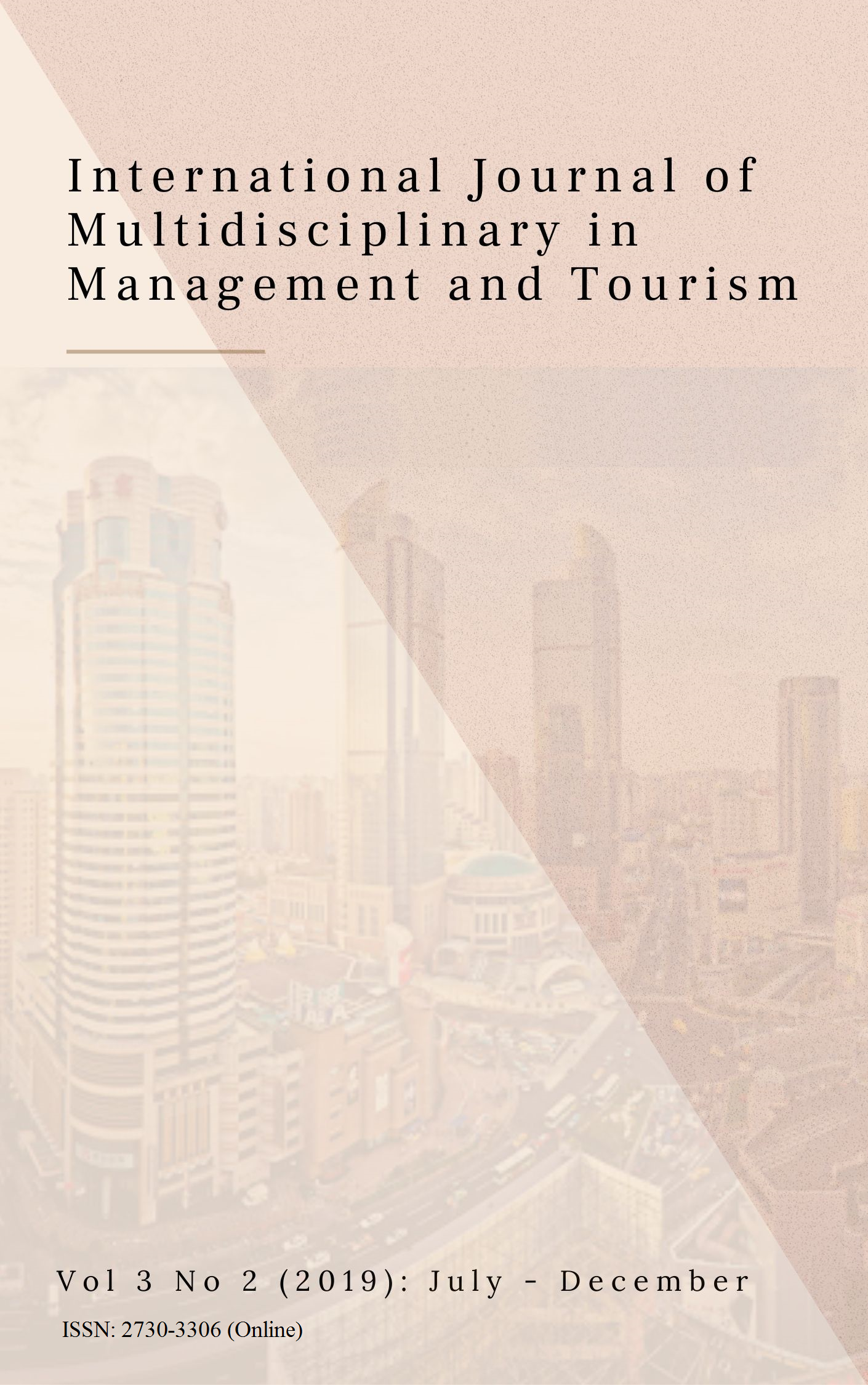The Impacts of Increased Labor Productivity of the Service Sector in Thailand: Analysis of Standard Computable General Equilibrium (CGE) Model
Main Article Content
Abstract
This paper aims to investigate the impact magnitude of the increased labor productivity in the service sector both at macro and sectoral levels. Due to Thailand’s service sector having shown the lower productivity growth than other sectors, this reflects a lack of knowledge and skills as well as industry-related work environment problems. This study is unlike the majority of previous empirical research studies which mainly intended to calculate labor productivity or to study factors affecting labor productivity or the causes of low labor productivity in Thailand. This study employs a standard computable general equilibrium (CGE) model to analyze the impact magnitude. The database was compiled using the 2010 social accounting matrix (SAM) which has 21 sectors to analyze. Three different scenarios were simulated for the service sector in Thailand with the labor productivity increased by 1, 2 and 3% relative to the baseline scenario. The results reveal the real Gross Domestic Product (GDP) increases by 1.75, 2.19 and 2.64% and the total domestic output increases by 1.16, 1.45 and 1.75%, respectively. The direct effect on domestic output when the labor productivity increased mostly occurs in Public Administration sector, followed by Education sector, Hospital sector, Finance, Banking and Insurance sector, Wholesale-Retail Trade and Other Services sector, Communication sector, Transportation and Logistics sector, Electricity and Water Supply System sector, Real Estate sector and Construction sector, respectively. While the indirect effect on domestic output when the labor productivity increased mostly happens in Paper Industries and Printing sector, Mining and Quarrying sector, Rubber, Chemical and Petroleum Industries sector, Metal, Metal Products and Machinery sector and Food Manufacturing sector, respectively. The reason being that these sectors are more upstream and are highly inter-linked with other service sectors in Thailand.
Article Details
References
Dervis, K., De Melo, J., & Robinson, S. (1982). “General Equilibrium Models for
Development Policy.” Cambridge, UK: Cambridge University Press. Quoting Hans Lofgren, Rebecca Lee Harris, & Sherman Robinson; with assistance from Marcelle Thomas and Moataz El-Said. International Food Policy Research Institute, 2002.
Dilaka Lathapipat and Thitima Chucherd. (2013). “The Role of Labor Market and Capacity Competition of Thailand” Bank of Thailand. Discussion Paper 03.
Dixon, P. B., B. R. Parmenter, A. A. Powell, & P. J. Wilcoxen. (1992). “Notes and Problems in Applied General Equilibrium Economics.” New York: North-Holland. Quoting Hans Lofgren, Rebecca Lee Harris, & Sherman Robinson; with assistance from Marcelle Thomas and Moataz El-Said. International Food Policy Research Institute, 2002.
Gilles Mourre. “Underutilisation of Labour in (continental western) Europe: A Detailed GDP Accounting Perspective.” Brussels: Solvay Brussels School of Economics and Management, 2009. (Mimeographed).
Ginsburgh, V., & Keyzer, M. (1997). “The Structure of Applied General Equilibrium Models.” Cambridge, Massachusetts: MIT Press. Quoting Hans Lofgren, Rebecca Lee Harris, & Sherman Robinson; with assistance from Marcelle Thomas and Moataz El-Said. International Food Policy Research Institute, 2002.
International Labour Organization (ILO), “Key Indicators of Labour Market (KILM).” 2010. Referred from Anothai Phutharee; and Poontarik Supha-amornkul; and Pornsawan Rakpentum. “Labour Productivity Index.” Bangkok: Bank of Thailand, 2010.
Kanchana Chokpaisarnsin. (2002). “Analysis of Total Factor Productivity Growth in Thailand (1977-1999)”. (Doctoral dissertation). Chulalongkorn University (in Thai).
Paitoon Kraipornsak (1998), The Role of Total Factor Productivity Growth in the Thai
Economy. Thammasat Economics Journal, 16(2), pp. 5-54. (in Thai).
Pradit Charsombut and Anuthep Kitprathan, “Labor Productivity in Thailand ‘s Manufacturing Sector.” Journal of Economics, Kasetsart University (January-June 1996), pp. 1-12. (in Thai).
Robinson, S. (1989). “Multisectoral Models,” In H. Chenery and T. N. Srinivasan (Eds.), Handbook of development economics, vol. 2 (pp. 885-947). Amsterdam: North- Holland. Quoting Hans Lofgren, Rebecca Lee Harris, & Sherman Robinson; with assistance from Marcelle Thomas and Moataz El-Said. International Food Policy Research Institute, 2002.
Sethaput Suthiwart-narueput and Sirikanya Tunsakul (2014), Seven Causes of Low Productivity of the Thai Labor Force, Thailand Future Foundation.
Shoven, J. B. (1976). “The Incidence and Efficiency Effects of Taxes on Income from Capital.” Journal of Political Economy, 84(6), pp. 1261-1283.
Shoven and Whalley, “A General Equilibrium Calculation of the Effects of Differential Taxation of Income from Capital in the U.S.” Connecticut: Yale University, 1972. (Mimeographed).
Sumalee Santipolavut, Sopachart Sukharomana, Rosada Vesdapunt, and Sommai Udomwitid . (2004). “A study of Labor productivity, the relationship between real wage and wage rate, and Change in modern technology”. Bangkok: Kasetsart University. (in Thai).
The National Account Division of National Economic and Social Development Board and The World Bank. (2007). “Measuring Output and Productivity in Thailand’s Service-producing Industries.” pp. 22-26.
Whalley, J. (1977). “The United Kingdom Tax System, 1968-1970: Some Fixed Point
Indications Of Its Economic Impact”, Econometrica, 45(8), pp. 1837-1858.

